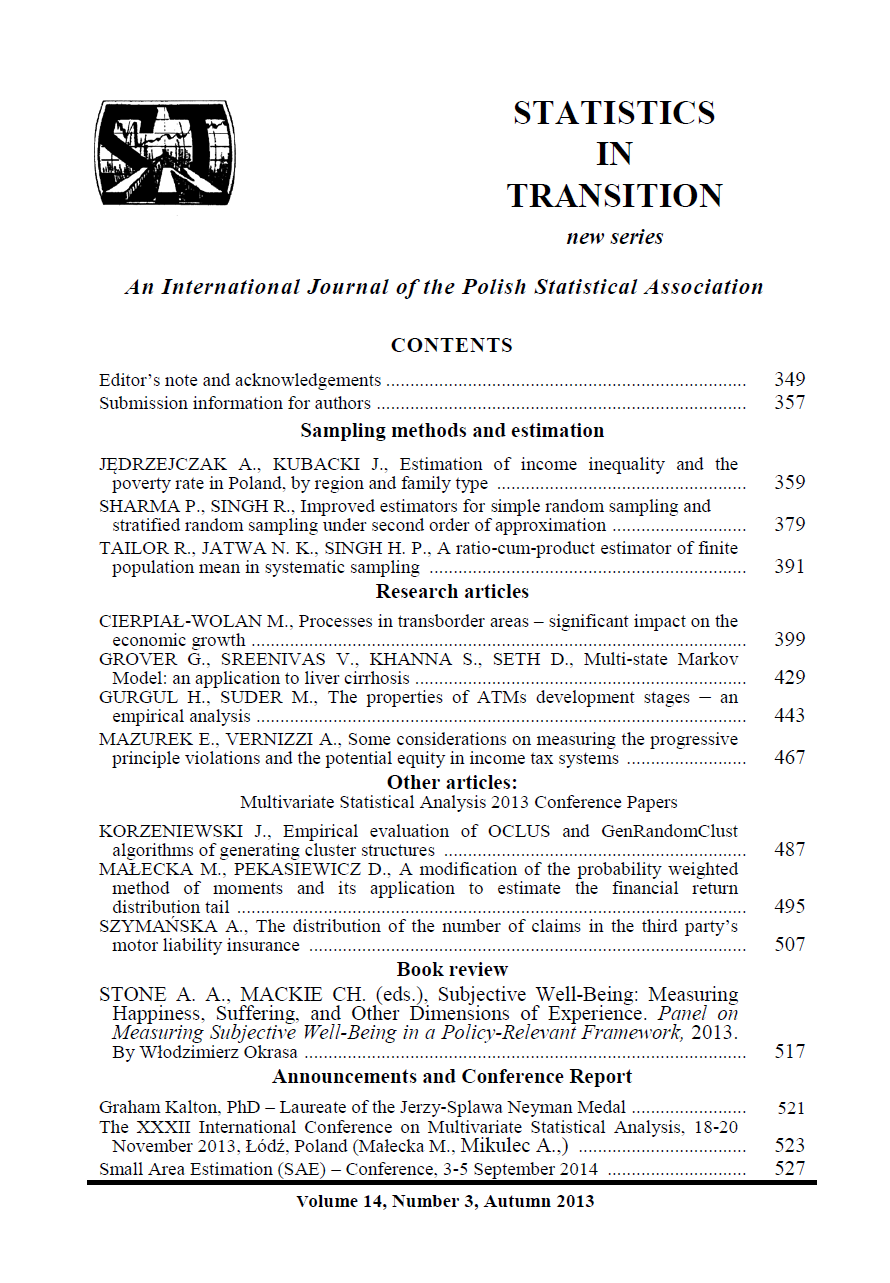ARTICLE
ABSTRACT
The control and treatment of chronic diseases is a major public health challenge, particularly for patients suffering from liver disease. In this paper, we propose a frame to estimate survival and death probabilities of the patients suffering from liver cirrhosis and HCC in the presence of competing risks. Database of the admitted patients in a hospital in Delhi has been used for the study. A stochastic illness-death model has been developed describing two liver illness states (Cirrhosis and HCC) and two death states (death due to liver disease and death due to competing risk). Individuals in the study were observed for one year of life at any age xi. The survival and death probabilities of the individuals suffering from liver cirrhosis and HCC have been estimated using the method of maximum likelihood. The probability of staying in the cirrhotic state is estimated to be threefold higher than that of developing HCC (0.64/0.21) in one year of life. The probability of cirrhotic patient moving to HCC state is twice (0.21/0.11) the probability of dying due to liver disease. HCC being the severe stage, the probability of patient dying due to HCC is three times that of cirrhosis. Markov model proves to be a useful tool for analysis of chronic degenerative disease like liver cirrhosis. It can provide in-depth insight for both the researchers and policy makers to resolve complex problems related to liver cirrhosis with irreversible transitions
KEYWORDS
illness-death model, maximum likelihood, Cirrhosis, Hepatocellular Carcinoma (HCC).
REFERENCES
ARMSTRONG, G. L., WASLEY, A., SIMARD E. P., MCQUILLAN G. M., KUHNERT, W. L., ALTER, M. J., (1999). The prevalence of hepatitis C virus infection in the United States, Annals of Internal medicine, 141, 705–714.
BISWAS, S., NAIR G., SEHGAL, V. K., (1987). Successive damage shock models predicting system survival time, International Journal Systems Sciences, 18(5), 831–836.
CHEN, H. H., DUFFY, S. W., TABAR, L., (1996). A Markov chain method to estimate the tumor progression rate from preclinical phase, sensitivity and positive predictive value for mammography in breast cancer screening, The Statistician, 45(3), 307–317.
CHIANG, C. L., (1968). Introduction to Stochastic Processes in Biostatistics, John Wiley, New York.
DI BISCEGLIE, A. M., (1997). Hepatitis C and hepatocellular carcinoma. Hepatology, 26 (3 suppl 1), 34S–38S.
FATTOVICH, G., STROFFOLINI, T., ZAGNI, I., DONATO, F., (2004).Hepatocellular Carcinoma in Cirrhosis: incidence and risk factors. Gastroentrology, 127, S35–S50.
FIX, E., NEYMAN, J., (1951). A simple stochastic model of recovery, relapse, death and loss of patients, Human Biology, 23, 205–241.
GOOLEY, T. A., LEISENRING W., CROWLEY J., STORER B. E., Estimation of failure probabilities in the presence of competing risks: New Representations of old Estimators, Stat. Med.,18: 695–706.
GROVER, G., MAKHIJA, N., (2004). On the estimation of survival and death probability under cardio-vascular shocks in the presence of competing risks based on an illness-death model, Journal of institute of science and technology, 13, 130–142.
PUTTER, H., FIOCCO, M., GESKUS R. B., (2007). Tutorial in biostatistics: competing risks and multi-state models. Statistics in medicine, 26, 2389–2430.
SACKS, S. T., CHIANG, C. L., (1977). A transition probability model for the study of chronic diseases. Mathematical Biosciences, 34, 325–346.
SERIO, G., MORABITO, A., (1988). Considerations on a staging process for chronic diseases. Rivista di Statistica Applicata, 21(23), 335–348.
SERIO, G., MORABITO, A., (1986). Stochastic survival model with covariates in cancer. Modelling of Biomedical Systems, 91–96.
WILLIAMS, R., (2006). Global challenges in liver disease, Hepatology, 44, 521–526
